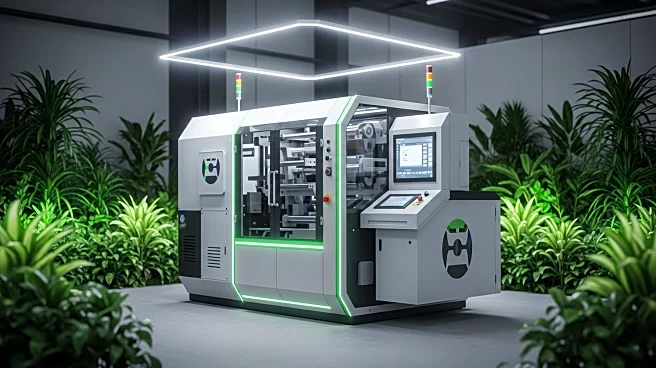What's Happening?
Toyota has successfully reduced motion waste in its manufacturing processes by implementing a new digital infrastructure known as the 'Nexus' architecture. This system, built on Inductive Automation's
Ignition platform with MQTT communications, has enabled Toyota to cut down motion waste by 97% and waiting time by 99%. The company eliminated 240 hours of monthly waste per site by replacing fragmented digital systems. The new architecture allows for automated tag creation and connection management, significantly reducing asset onboarding time from 33 days to less than one day. This transformation was preceded by a process redesign, where Toyota engaged users to understand their needs and applied agile methodology in two-week sprints. The initiative is part of Toyota's continuous improvement efforts driven by the Japanese concept of muda, which focuses on eliminating waste in all forms.
Why It's Important?
The implementation of the Nexus architecture is a significant step for Toyota in enhancing its manufacturing efficiency. By reducing motion waste and waiting time, Toyota can streamline its operations, potentially leading to increased productivity and cost savings. This move reflects the broader trend in the manufacturing industry towards digital transformation and the use of advanced technologies to optimize processes. The reduction in waste not only benefits Toyota's operational efficiency but also aligns with environmental sustainability goals by minimizing unnecessary resource consumption. Other manufacturers may look to Toyota's approach as a model for integrating digital tools to improve their own processes.
What's Next?
Toyota's successful implementation of the Nexus architecture may encourage further digital transformation initiatives within the company and across the industry. As Toyota continues to refine its processes, it may explore additional opportunities to leverage digital tools for efficiency gains. The company's focus on continuous improvement suggests that it will keep evaluating and enhancing its systems to further reduce waste. Other manufacturers might adopt similar strategies, leading to broader industry shifts towards more efficient and sustainable practices.
Beyond the Headlines
Toyota's approach highlights the importance of understanding user needs and rethinking workflows before deploying new technologies. This strategy underscores the value of agile methodologies in digital transformation projects, ensuring that technology implementations are aligned with actual operational requirements. The emphasis on eliminating waste reflects a cultural commitment to efficiency and sustainability, which could influence other sectors to adopt similar practices.











